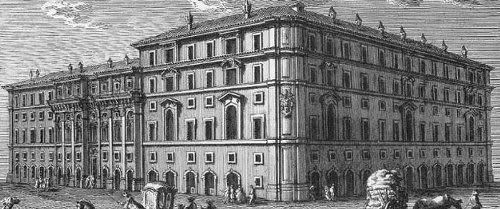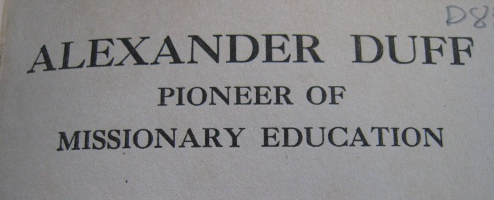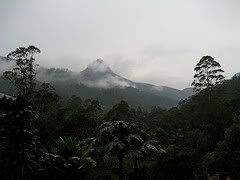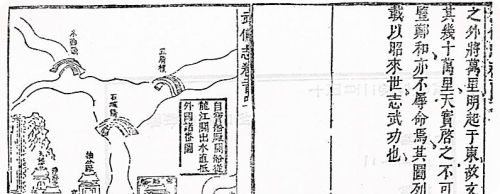 |
(The Arabian Sea Network)
|
(Read Part 1)
In 1881, the Theosophist Henry Steel Olcott, said, “We Europeans..have a right to more than suspect that India 8,000 years ago sent out a colony of emigrants[6].” New evidence suggests that Olcott was right about the time, but wrong about Indians emigrating in the Old World.
During the third millennium BCE that trade relations between India and Mesopotamia prospered: Burial sites in Mesopotamia had shell-made lamps and cups produced from a conch shell found only in India; Early Dynastic Mesopotamians were consumers of the Harappan carnelian bead. Also the Gujaratis were exporting hardwood and there are even unverified reports of spices from the Malabar coast reaching Mesopotamia. But now there is a debate over if a colony of Indians lived in Mesopotamia — in a Meluhhan village — at that time[7].
The interesting news is that these trade relations happened much earlier than was previously believed. The important question is: did Harappans have knowledge of the monsoon winds to travel to Mesopotamia?
Soon trade with Mesopotamia declined because Oman developed as a trading hub; the Harappans did not have to travel as far as Mesopotamia for trading. Oman imported both luxury goods and basic commodities: wood, carnelian, combs, shell, metal objects, seals, weights and possibly large volume storage jars. What was considered luxury – copper, cereals — became common goods with coastal communities playing a major part.
The bitumen coated reed boats of the third millennium BCE were replaced by the plank-built wooden boats by the second millennium BCE. Instead of a few major players, there were many minor players creating a distributed network.
While there is evidence for sea-faring Harappans traveling to the Persian Gulf, there is no archaeological evidence of Mesopotamians reaching India during that period. Since no large ports, warehouses have been found in Harappa, it is assumed that the trade involved small-scale ports belonging to local communities; the Lothal dock and warehouse is of late Harappan period.
The other interesting development is the trade with East Africa. The Arabians and their neighbors in Levant and Mesopotamia used wheat and one species – the bread wheat – came from the Indus and the other – emmer wheat – from Africa. The pearl millet which was domesticated in Mali and Mauritania around 2500 BCE was found in Gujarat by 2000 – 1700 BCE. African crops like sorghum and Ragi started appearing in South India after this period, possibly via Gujarat. There was a Western transmission of crops too: moong dal (third mil BCE), urad dal (2500 BCE), pigeon pea (1400 BCE), sesame (2500 BCE), and cotton (5000 BCE) made their way to both Africa and Arabia.
 |
| (Zebu) |
By 2000 BCE, the the Harappan maritime activity shifted to Gujarat. Around that time the trade between Africa and India intensified. While crops moved from Africa to India, genetic studies have shown that the zebu cattle went from India via Arabia to Africa. These Bos Indicus, who reached Africa, met some Bos taurines and before you knew, sparks were flying, setting the African Savannah on fire. There is also evidence of the migration of zebus from Indus to Near East via Iran in the late third millennium BCE. Some of this zebu movement involved travel by boats along the Arabian coast and points to a trade on a much larger scale. Thus the transportation of a giraffe in 1405 by Zheng He’s fleet from Africa to China does not look that far fetched.
The Omanis developed wooden boat technology and deep-sea fishing around the time the African crops reached India. If they had knowledge of monsoons, the Omanis could reach India directly, else they had to travel around the Makran coast and reach India via Iran. It is also possible that the Omanis got their wooden craft technology from Indians; after all they imported wood from India.
 |
| (Ramses II) |
An interesting development happens in 1200 BCE. Among the dried fruits kept in the nostrils of the mummy of Ramses II was pepper and there was only one place in the world where pepper was produced. While this points to the first contact between the Malabar coast and Egypt and the origins of the spice trade, what is not known is how the pepper reached Egypt.
The Harappan trade meanwhile shifted from Oman to Bahrain — Mesopotamian textual sources start mentioning more of Dilmun than Magan — and so Dilumn became the transit point for goods to Mesopotamia from India, but this change in the transit point did not affect the goods. Many millennia later when When Ibn Battuta visited Calicut, the chief merchant was an Ibrahim from Bahrain with the title shah bandar (the port master or chief of harbor)[5].
This is the point we see the rise of an early capitalism with private Mesopotamian citizens funding seafaring merchants who operated in a complex exchange system. Business was risky, but Dilmun communities thrived on the profit.
Then slowly we see the merchants in Dilmun adopting Harappan administrative standards. Thus goods were sealed with the Harappan style stamp seals and not the cylindrical Mesopotamian ones. The Indus weight system was also used and it was known as the standard of Dilmun. Meanwhile certain seals found also in Mohenjo-daro and Harappa, which were inspired by the Sumerian seals
By Iron age, there was a technological break through with the mastery over monsoons. The Arabians were already using monsoon winds to reach India. At the same time the Egyptians too started doing the same — with boats with sharp bows and triangular sails — skipping the middlemen in Arabia due to which South Indian ports gain prominence over Gujarati ones.
Finally
Since our minds are locked in to the “Aryan migration/trickle down” 1500 BCE time frame, we rarely look into the interactions before that period. A recent paper in Nature, on the origins of Indian population, showed that the rise of Ancestral North Indians and South Indians was connected to human. Between these two events, Indians had extensive trade contacts with the Old World and hence the door was not closed after the ANI and ASI established themselves. There was movement of people, animals and plants, both into India and out of India for many generations. It is worth investigating what impact this interaction had in the cultural transformation of the subcontinent.
A painful lesson India and Africa learned is that trade usually ends up in colonization. But looking at the trade network of this period, there is no such evidence, even in a place like Bahrain which was central to the global trade. Trade, free of colonization, would take place even during the medieval period till the Portuguese showed up in Calicut in 1498 looking for “Christians and spices.”
References:
- Himanshu Prabha Ray, The Archaeology of Seafaring in Ancient South Asia (Cambridge University Press, 2003).
- Nicole Boivin and Dorian Fuller, Shell Middens, Ships and Seeds: Exploring Coastal Subsistence, Maritime Trade and the Dispersal of Domesticates in and Around the Ancient Arabian Peninsula, Journal of World Prehistory 22, no. 2 (June 1, 2009): 180, 113.
- Jack Turner, Spice: The History of a Temptation (Vintage, 2005).
- Jacques Connan, “A comparative geochemical study of bituminous boat remains from H3, As-Sabiyah (Kuwait), and RJ-2, Ra’s al-Jinz (Oman),”Arabian Archaeology and Epigraphy 16, no. 1 (2005): 21-66.
- Mehrda Shokoohy, Muslim Architecture of South India: The Sultanate of Ma’bar and the Traditions of Maritime Settlers on the Malabar and Coromandel Coasts, 1st ed. (RoutledgeCurzon, 2003).
- Edwin Bryant, The Quest for the Origins of Vedic Culture: The Indo-Aryan Migration Debate (Oxford University Press, USA, 2004).
- C. C. Lamberg-Karlovsky,Archaeological Thought in America (Cambridge University Press, 1991).
Notes:
- Most of this article is based of Reference [2].
- From Wikipedia: “In 1974, Egyptologists visiting his tomb noticed that the mummy’s condition was rapidly deteriorating. They decided to fly Ramesses II’s mummy to Paris for examination. Ramesses II was issued an Egyptian passport that listed his occupation
as “King (deceased)”. The mummy was received at Le Bourget airport,
just outside Paris, with the full military honours befitting a king”
Images: (via Wikipedia)









 When Duff first proposed this method, veteran missionaries did not find it appealing. Still he went ahead without any government support. Bengalis did not mind an English school, but had reservations about an English school where Bible was an important subject. This reservation made it difficult for Duff to get started; he could not even find a building to start his classes.
When Duff first proposed this method, veteran missionaries did not find it appealing. Still he went ahead without any government support. Bengalis did not mind an English school, but had reservations about an English school where Bible was an important subject. This reservation made it difficult for Duff to get started; he could not even find a building to start his classes.
 Soleyman, an Arab merchant who visited Ceylon in the ninth century, mentioned the Adam tradition, which suggests that it was prevalent within two centuries of Islam’s founding. Sindbad the Sailor’s tales, believed to be partly based on real sailors tales, also mentions a pilgrimage to the place “where Adam was confined after his banishment from Paradiese.” It is believed that this tradition originated among the Copts (Egyptian Christians) of the fourth and fifth centuries[4]. There is also a story which mentions that
Soleyman, an Arab merchant who visited Ceylon in the ninth century, mentioned the Adam tradition, which suggests that it was prevalent within two centuries of Islam’s founding. Sindbad the Sailor’s tales, believed to be partly based on real sailors tales, also mentions a pilgrimage to the place “where Adam was confined after his banishment from Paradiese.” It is believed that this tradition originated among the Copts (Egyptian Christians) of the fourth and fifth centuries[4]. There is also a story which mentions that 
